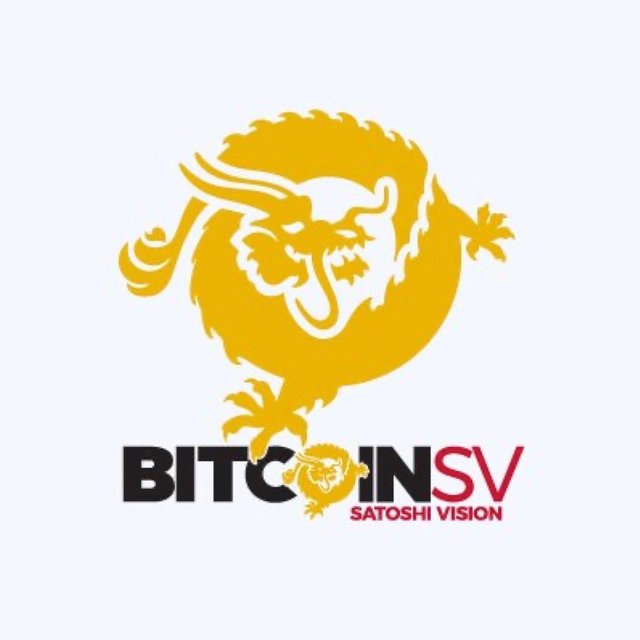
As Bitcoin continues on its trajectory towards the sky, you may have become aware of other coins which are not Bitcoin commonly referred to as alt coins. A number of these even share the Bitcoin name, such as Bitcoin Cash, Wrapped Bitcoin, and this week’s highlight, Bitcoin SV. If you haven’t heard of Bitcoin SV and you aren’t quite sure what it is, you’re not alone, as it is one of the lesser known cryptocurrencies with Bitcoin in its name.
What is Bitcoin SV?
Ever since its creation in 2009, Bitcoin has been subject to several issues effecting it’s scalability, most notably the amount of time it takes for a transaction to process. In 2017, a group of developers tried to solve this problem by creating a fork of Bitcoin known as Bitcoin Cash. In 2018, Bitcoin Cash itself forked, forming what is now known as Bitcoin SV, or Bitcoin Satoshi’s Vision.
The focus of Bitcoin SV is to improve the original technology encompassed in the Bitcoin whitepaper. And it wants to do this by improving the speed of transactions without using layer two solutions such as the lightning network. Even though Bitcoin SV is a fork of Bitcoin Cash, many of its hardcore followers believe it is closer to the original Bitcoin project than Bitcoin Cash.
How Does It Work?
Bitcoin SV uses the same consensus protocols as the original Bitcoin network, but with a massively increased block size. Bitcoin SV functions on a proof of work consensus mechanism in which miners earn rewards for every block created. Bitcoin can only process 1MB of information per block, which when compared to Visa being able to process 65,000 transactions per second, this measly 1MB won’t get you very far. Bitcoin Cash tried to remedy this by creating block sizes eight times larger than Bitcoin at 8MB. But of course, this still isn’t enough, which is why Bitcoin SV was designed with block sizes of 128MB. In 2019, Bitcoin SV underwent a protocol upgrade, and it now boasts block sizes of 2 GB allowing it to process about 2,800 transactions per second, making it much more viable as a payment processor than the other two Bitcoin protocols.
Another cool feature, is that the SV network features the Quasar Protocol Upgrade, which allows block size to be adjusted to meet demands. This means some blocks can be smaller than the 2 GB when processed. When Bitcoin SV is mined, just as in Bitcoin, miners receive block rewards as well as transaction fees. Someday, there will be no more Bitcoins to mine—and this goes for Bitcoin SV as well. And when this happens, cryptocurrency enthusiasts are worried that miners will no longer be incentivized to process transactions because the Bitcoin network fees are so low. Bitcoin SV solves this problem because the blocks are so large that miners can still earn a nice amount in fees from processing the transaction alone, without worrying about the mining rewards.
Besides all of the above benefits, Bitcoin SV is also designed to be more regulation friendly in order to win over those who may not yet be confident in Bitcoin technology.
What’s the Problem?
These large blocks sound amazing right? So why didn’t Satoshi design Bitcoin to originally have larger blocks so that it could scale more easily? Although not everyone may agree, Satoshi designed the block sizes of Bitcoin to be smaller on purpose, even though he knew that the protocol would face scalability issues. But he did this because the larger the block size, the larger the nodes need to be to process them. This means that lower level miners are quickly priced out of mining Bitcoin SV, which lowers the decentralization of the project. And this isn’t a new problem, developers of all cryptocurrency projects have long known that block size and centralization go hand in hand.
This doesn’t mean that Bitcoin SV is centralized, because it isn’t. But the mining for the project requires much more power than the mining of regular Bitcoin. This means mining companies, such as US based Riot, are much more likely to mine the coin successfully—which takes some of the power away from the people. And Satoshi, when he invented Bitcoin, wanted to return the power of money to the people.
Bitcoin SV Controversy
You may have noticed that Bitcoin SV isn’t listed on too many exchanges. And in a recent interview, when representatives of Coinbase were asked if they planned to feature the coin on their marketplace, the answer was no. This is because Bitcoin SV has unfortunately come to popularity shrouded in controversy.
Many Bitcoin fanatics know that the creator of the cryptocurrency, Satoshi Nakamoto, disappeared shortly after the products inception. And although many people have speculated about different individuals being the real Satoshi over the years, all of the individuals mentioned have denied the claim. Well, except for the creator of Bitcoin SV, Craig Wright. He openly claims that he is Satoshi Nakamoto, even though he has never produced one shred of evidence to prove his identity. Most cryptocurrency fanatics don’t believe his claims and they believe he is only claiming as such for monetary gain and publicity for Bitcoin SV. This is highly frowned upon in the Bitcoin community and has led to most of the involved to dismiss Bitcoin SV.
Should I Buy Bitcoin SV?
As far as investing and use cases go, Bitcoin SV could be a viable cryptocurrency sometime in the coming days. However, as of the writing of this article, Bitcoin SV is truly just another altcoin. Yes, it does improve upon the original Bitcoin protocol, but the problem is, it doesn’t improve enough to win widespread acclaim or adaptation. And the fact that most hard-core cryptocurrency followers are not enthralled by the project should be an indication that maybe it isn’t all it’s hyped up to be. Currently, there are not many places you can spend Bitcoin SV so it is more of an investment only altcoin.
This being said, it is possible that Bitcoin SV could be a great investment and quite possibly the next Bitcoin. But this is the speculation which surrounds all cryptocurrencies, so you need to review all the information yourself and make your own informed decision. Remember, investing in cryptocurrency is always risky so you should discuss any large purchases with someone you trust before making them.
This article was brought to you by the original Bitcoin Dice on MintDice. Originally posted on MintDice.com.


Stay up to date with the latest crypto news on the MintDice Blog.
Downvoting a post can decrease pending rewards and make it less visible. Common reasons:
Submit
Hi! nice content, have you heard of BitcoinPOS?
Downvoting a post can decrease pending rewards and make it less visible. Common reasons:
Submit
me interesa, cuéntame mas?
Downvoting a post can decrease pending rewards and make it less visible. Common reasons:
Submit
Really good post man!
Downvoting a post can decrease pending rewards and make it less visible. Common reasons:
Submit